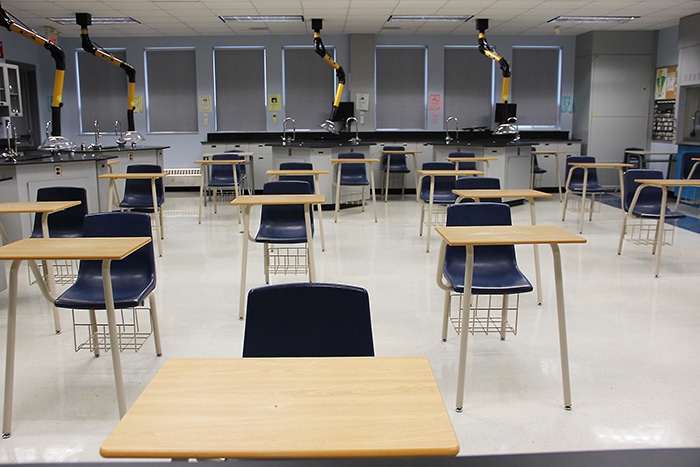
Public board schools run at 72% capacity
By Pam Wright
Local Journalism Initiative Reporter
The Lambton Kent District School Board is currently operating at 72-per-cent capacity with 8,421 empty pupil spaces throughout the district.
That means nearly three out of every 10 desks sits empty.
The snapshot point-in-time assessment taken in September was released to trustees last week at the board’s regular meeting in Sarnia.
Brought forward as part of the 2021-2022 pupil accommodation report, the document has projections for the future with the number of students expected to decline by another 221 students by 2031.
Lambton Kent’s 50 elementary schools are at 77-per-cent capacity and its 12 secondary schools come in at 64-per-cent capacity.
Currently, there are seven elementary schools within the board that have less than 150 students and three high schools with fewer than 400 students.
The report recommends that board close schools and consolidate schools, however, that option isn’t available as school closures are forbidden under a moratorium imposed by the former Liberal government.
One of recommendations put forward would see secondary schools in south Chatham-Kent consolidated, along with the construction of a new larger secondary school.
However, nothing is carved in stone. According to
Mark Sherman, superintendent of capital planning and pupil accommodation, the recommendations in the current pupil accommodation report were made prior to the province’s moratorium.
Aging buildings and limited financial resources continue to challenge the board, Sherman explained, noting the board would like to be able to “shed” the 8,000-plus vacant spaces it has.
Consolidating south Kent high schools by blending them into one new super-school is only one of the recommendations, he explained.
However, that option alone would eliminate 1,300 pupil spaces – a significant savings for the board overall.
Sherman said all of the data will be revamped once the moratorium is lifted. New recommendations will be need to be brought forward at that time to “right size the board,” he added, as information will be out-dated.
Sherman said consolidating secondary schools by blending them into a bigger school allows the board to offer a greater selection of programming which helps students become better prepared for post-secondary education.






